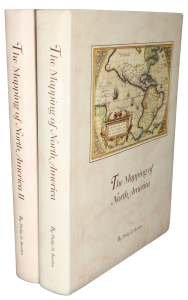Rare Maps and Prints
- World & Celestial
- North America
- West Indies, South & Central America
- British Isles
- British Isles
- English counties
- Large-scale
- Bedfordshire
- Berkshire
- Buckinghamshire
- Cambridgeshire
- Cheshire
- Cornwall
- Cumberland
- Derbyshire
- Devon
- Dorset
- Durham
- Essex
- Gloucestershire
- Hampshire
- Herefordshire
- Hertfordshire
- Huntingdonshire
- Islands
- Kent
- Lancashire
- Leicestershire
- Lincolnshire
- Middlesex
- Norfolk
- Northamptonshire
- Northumberland
- Nottinghamshire
- Oxfordshire
- Rutland
- Shropshire
- Somerset
- Staffordshire
- Suffolk
- Surrey
- Sussex
- Warwickshire
- Westmoreland
- Wiltshire
- Worcestershire
- Yorkshire
- Wales
- Scotland
- Ireland
- Western Europe
- Eastern Europe
- Middle East
- Africa
- Asia
- Australasia & Pacific
- Decorative Prints
- Title Pages
Mr. Philip D. Burden
P.O. Box 863,
Chalfont St. Giles, Bucks HP6 9HD,
UNITED KINGDOM
Tel: +44 (0) 1494 76 33 13
Email: enquiries@caburden.com
George Washington’s ‘Headquarters of the Rebels’ is identified at Cambridge and American positions opposite Bunkers Hill, at the mouth of the Charles River, Roxbury and elsewhere encircle the town. The key describes some of the Rebel positions, a hill on the road from Roxbury into Boston is a place where ‘the Enemy annoy ye Centuries & Officers with small Arms, but seldom do any Execution.’ Another outside Roxbury is even applauded as ‘A Strong Post of the Enemy, Fortified in appearance with great Judgement …’
As the title states this plan reflects the position of the Siege in October 1775. A note upper left reads ‘To the Public The Principal part of this Plan was Survey’d by Richard Williams, Lieutenant at Boston and sent over by the Son of a Nobleman to his Father in Town, by Whose Permission it is Published. NB. The Original has been compared with and Additions made from Several other curious Drawings’. That manuscript survives today at the British Library (Add.MS. 15535.5) along with a series of watercolour drawings. Williams was in the Royal Welch Fusiliers and crucially kept a journal from 1774-75 which survives today at the Buffalo & Erie County Public Library. It has been made available online in digital form. He arrived in Boston in June 1775 and returned to London in early 1776.
The nobleman’s son referred to as carrying the manuscript was most likely Hugh Percy (1742-1817), commander of the British relief force at Lexington and Concord, April 19, 1775, and son of the Duke of Northumberland. In January Washington met with John Adams and a host of generals to discuss the vote at Congress. He had been instructed ‘to destroy the army & navy at Boston in any way he & a council of war shall think best, even if the town must be burnt.’ This map was published just five days before the British evacuated Boston. Nebenzahl (1974) pp. 48-49; Nebenzahl (1975) 16; Sellers & Van Ee (1981) 932; Williams, Richard Journal http://digital.buffalolib.org/document/77 (accessed 13 May 2021).
A Plan of Boston, and its Environs. shewing the true Situation of His Majesty's Army. And also those of the Rebels. Drawn by an Engineer at Boston. Octr. 1775
SOLD






